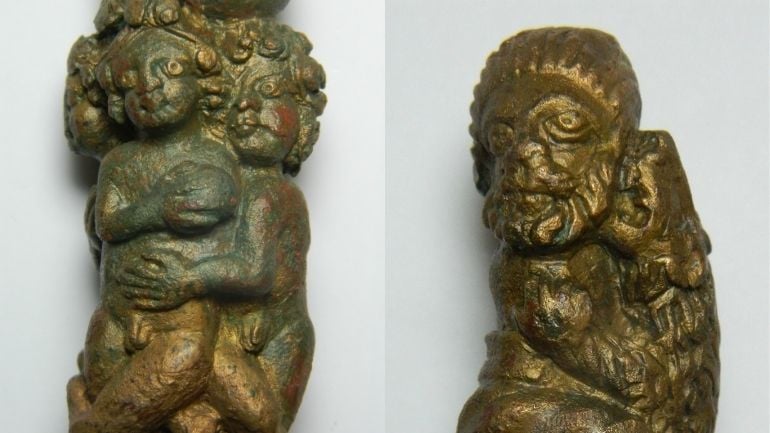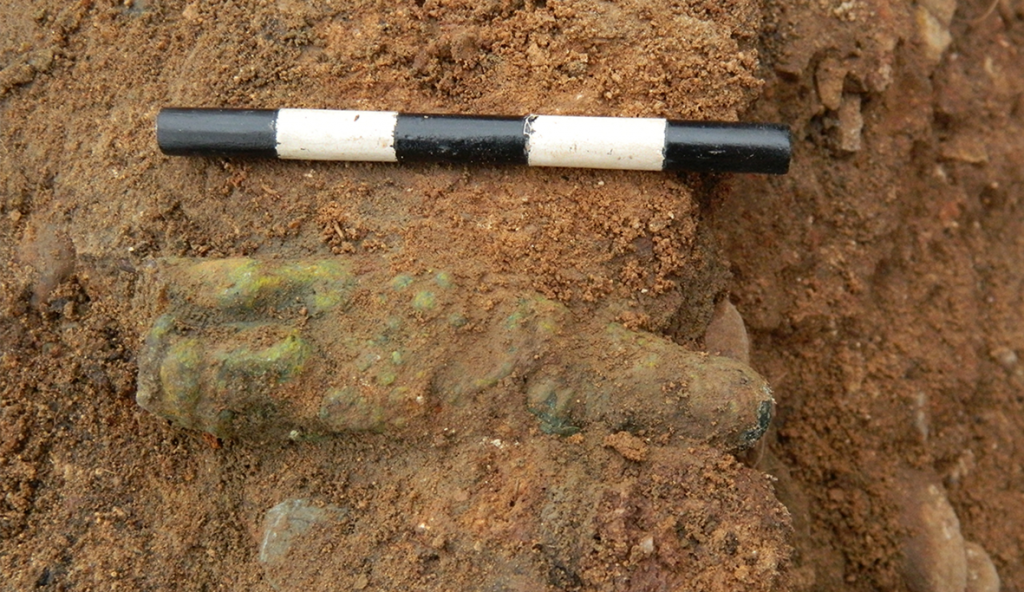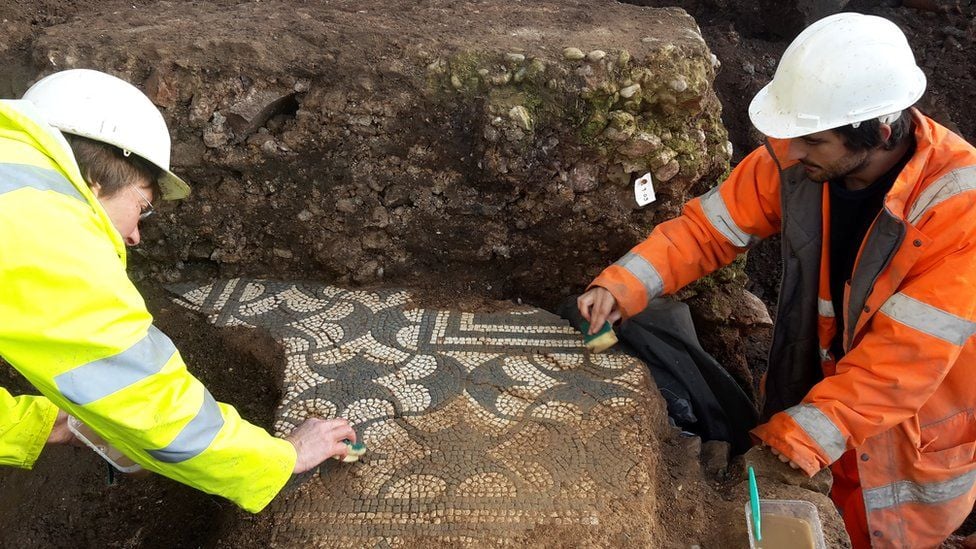Archaeology & History
Archaeologists Have Uncovered a Terrifying Relic Suggesting That Ancient Romans Fed Their Captives to Lions All Over Europe
It's the first evidence that lions were used in Roman executions in Britain.

It's the first evidence that lions were used in Roman executions in Britain.

Sarah Cascone

Britain may have been on the outskirts of the ancient Roman Empire, but even there, executions appear to have been grisly spectacles.
Archaeologists even believe lions were sometimes used to kill terrified captives—and now they have an artifact that serves as proof.
During 2016 excavations on the site of a Roman house conducted by the University of Leicester, scholars found a carved bronze key handle depicting a man locked in combat with a ferocious lion in front of four naked and fearful youths. The scene suggests a public execution, according to a study published in the journal Britannia.
“When first found, it appeared as an indistinguishable bronze object, but after we carefully cleaned off the soil, remarkably, we revealed several small faces looking back at us. It was absolutely astounding,” Leicester University archaeologist and study coauthor Gavin Speed said in a statement. “Nothing quite like this has been discovered anywhere in the Roman Empire before.”
Called the Friars Causeway key handle after the location where it was found, “it illuminates the brutal character of Roman authority in this province,” John Pearce of King’s College London, another coauthor, added.

The Friars Causeway key handle before cleaning and conservation. Photo courtesy of University of Leicester Archaeological Services.
Under Roman law, criminals and prisoners of war could be thrown to wild beasts. Such scenes are well-documented in the Colosseum in Rome, but this is the first evidence that the practice of using exotic animals to kill prisoners as a form of public entertainment—damnatio ad bestias in Latin—spread as far as Britain.
Rome would have sourced lions from Mesopotamia and North Africa, transporting them to the far reaches of the empire by river boat and wagon, according to the London Times.
“That was slightly worse than being condemned to the mines, which is the other way that prisoners often met their end,” Leicester University archaeologist Nicholas Cooper, the paper’s third author, told the BBC.

Mosaic excavations in an ancient Roman town house in Leicester. Photo courtesy of University of Leicester Archaeological Services.
With his long hair, bushy beard, and shirtless torso, the man fending off the lion on the key handle is likely meant to represent a barbarian. The scene depicts the imminent demise of those conquered by the Romans, symbolizing the futility of anyone opposing the all-powerful empire.
Archaeologists believe it was made about a century after Roman rule was imposed in Britain, around 200 AD. The excavations in Leicester have also yielded mosaics floors, roads, and a theater dating to Roman times.
The piece is set to go on display at the Jewry Wall Museum in Leicester once the current renovations are completed in 2023.